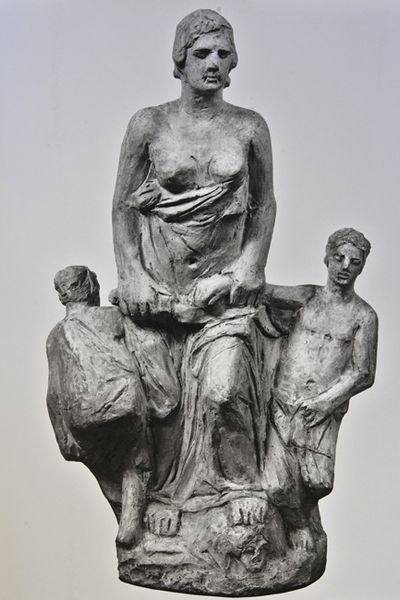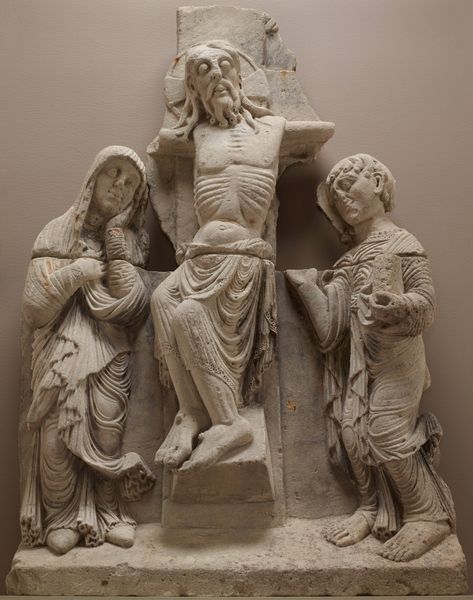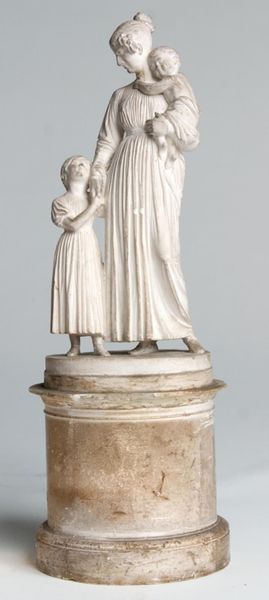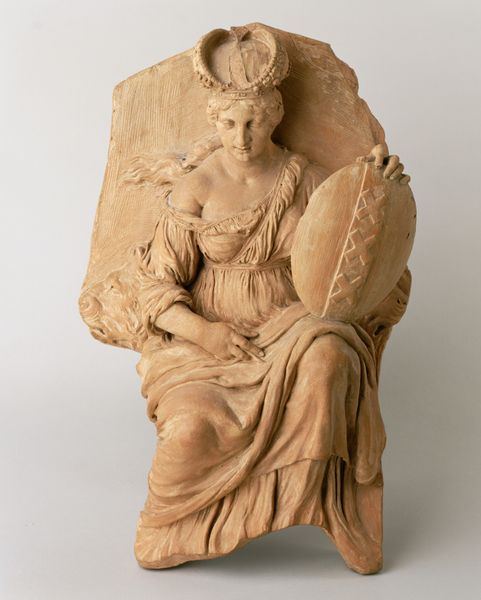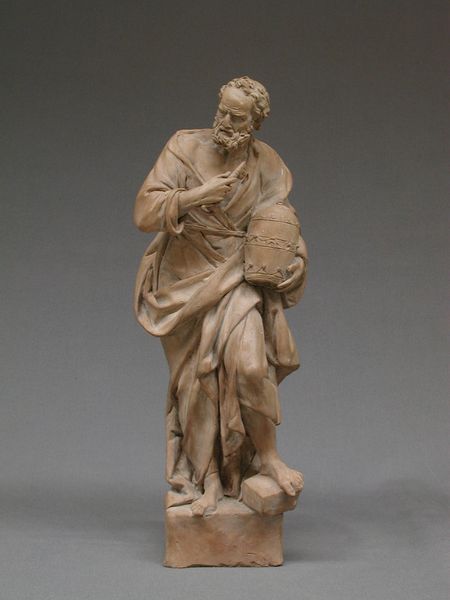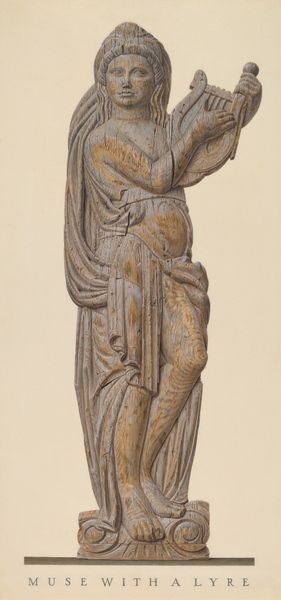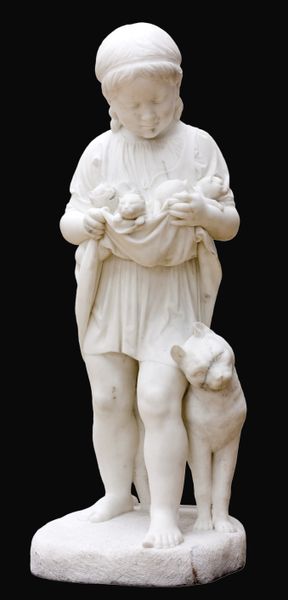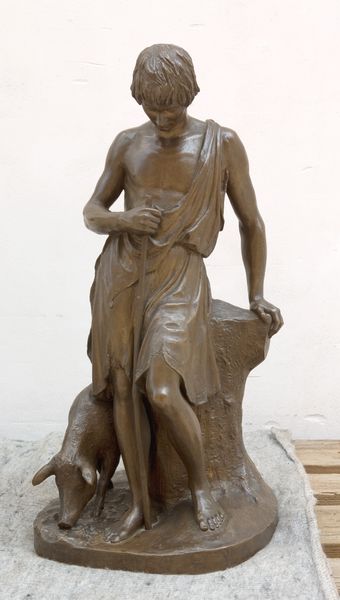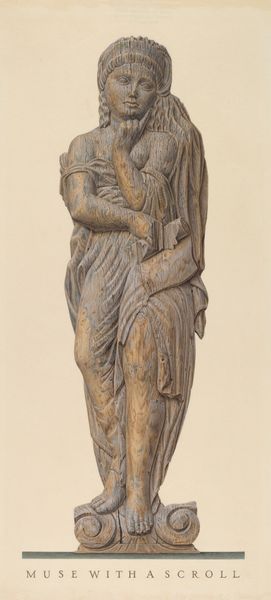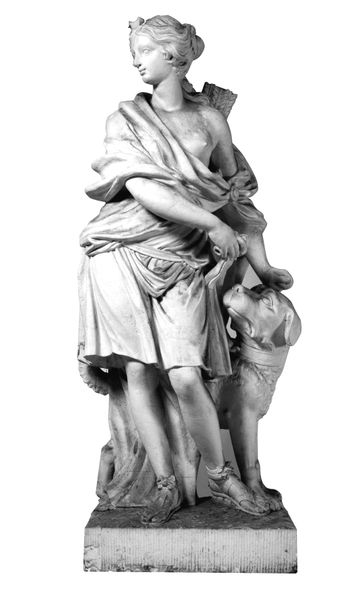
Saint Matthew and the Angel c. 1570 - 1575
0:00
0:00
sculpture, terracotta
#
portrait
#
sculpture
#
mannerism
#
figuration
#
sculpture
#
terracotta
Copyright: Public Domain
Curator: Attributed to Francesco Segala, this terracotta sculpture titled "Saint Matthew and the Angel" dates to about 1570-1575. You can find it here at the Minneapolis Institute of Art. What are your initial impressions? Editor: Immediately, I sense a tension. A quiet drama unfolds between these figures; the angel whispers, urging Matthew onwards, maybe he’s struggling with what to write. There's a real emotional heft for a terracotta. Curator: Segala, and sculptors like him, frequently used terracotta because of its workability and availability in the Veneto region. Its relative cheapness allowed for broader dissemination of art, compared to more expensive marble works. Editor: The drapery folds are incredible, cascading like water, pooling around Saint Matthew’s feet. The soft, yielding texture of the clay makes you feel like you could almost mould it again, reshape the narrative itself. It's deeply affecting. Curator: Mannerism favored artifice, complexity and exaggeration over naturalism. Look how the sculptor employed these tendencies; the figures are elongated, and the pose is somewhat theatrical, not quite naturally rendered but dramatically staged. It speaks to a patron's desire to display learning and sophistication. Editor: I love the angel's earnest face—the way he looks up at Matthew. It brings an incredible intimacy to this grand, rather formal, scene. I imagine the texture, slightly rough to the touch, lending the figures an immediacy marble might lack. Curator: Terracotta also allowed workshops to create multiple versions of a design, increasing efficiency and the distribution of religious imagery. These pieces fulfilled both an aesthetic and a devotional purpose. Editor: Thinking about it, that mass production aspect adds another layer. This wasn't just a unique, divinely inspired creation, but something reproducible, intended for widespread consumption and perhaps, impact. Gives one pause. Curator: Precisely! It challenges that Romantic ideal of the solitary genius. The artistic and devotional impact relies upon the skillful handling of a humble material. Editor: It feels so contemporary, thinking about process, material, audience and accessibility, things that concern today's artists. Curator: Indeed, contemplating "Saint Matthew and the Angel" makes us realize these dialogues continue. Editor: Beautifully put. Now, if only that angel could tell us all the secrets embedded in that terracotta…
Comments
No comments
Be the first to comment and join the conversation on the ultimate creative platform.
